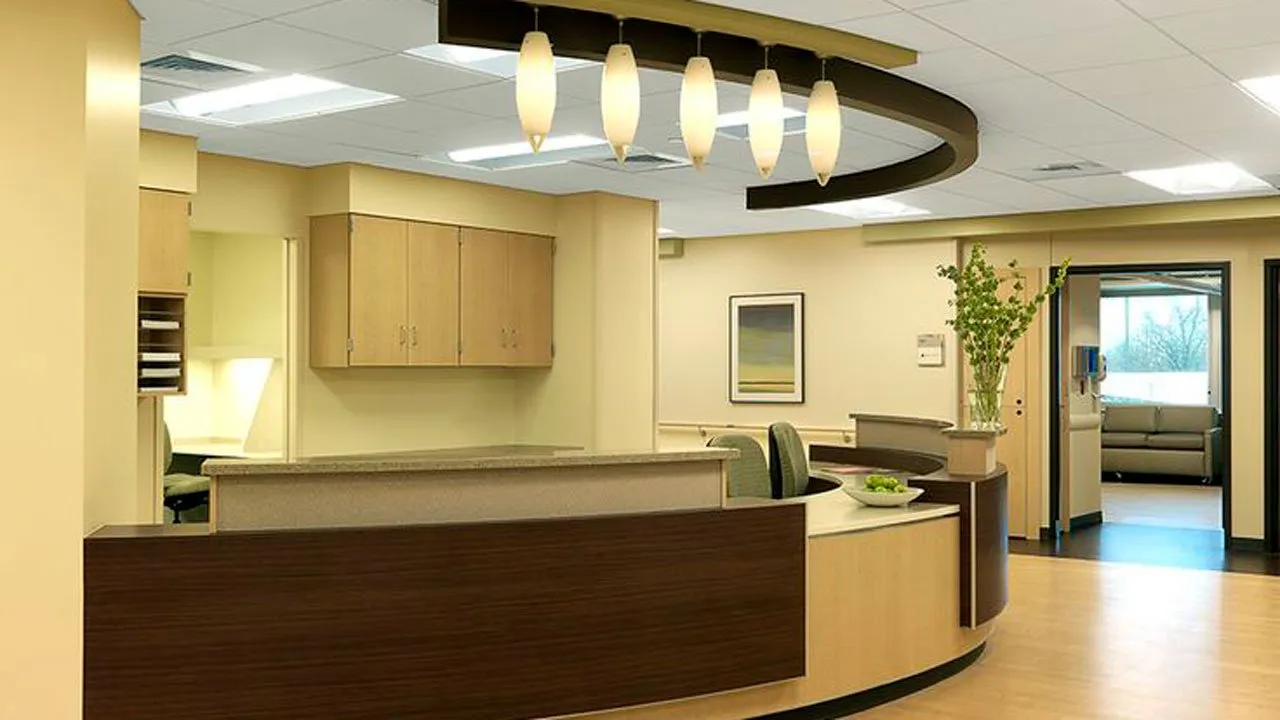Healthcare Facilities, Architectural designs

Healthcare facilities encompass a wide range of physical locations and institutions where various healthcare services are provided to patients. These facilities serve as the backbone of the healthcare system, offering diagnostic, treatment, and supportive services for individuals seeking medical care. Here are some common types of healthcare facilities:
- Hospitals: Hospitals are large, acute-care facilities that provide a wide range of medical services, including emergency care, surgery, inpatient care, diagnostic imaging, and specialist consultations.
- Clinics: Clinics are outpatient facilities where patients receive medical care, including primary care, specialty care, and preventive services. They can be primary care clinics, specialty clinics, or community health clinics.
- Emergency Departments: Emergency departments, often within hospitals, provide emergency medical care for individuals with serious or life-threatening conditions.
- Urgent Care Centers: Urgent care centers offer medical services for non-life-threatening illnesses and injuries, providing immediate care without the need for an appointment.
- Physician’s Offices: Physician’s offices, also known as medical practices or medical offices, are where doctors and healthcare providers see patients for consultations, examinations, and routine medical care.
- Dental Clinics: Dental clinics offer oral health services, including check-ups, cleanings, fillings, and dental procedures.
- Mental Health Centers: Mental health centers provide services for individuals dealing with mental health and emotional issues, offering therapy, counseling, and psychiatric care.
- Rehabilitation Centers: Rehabilitation centers focus on physical therapy, occupational therapy, and other therapies to help patients recover from injuries or surgeries.
- Nursing Homes: Nursing homes provide long-term care for individuals who require assistance with daily activities or have complex medical needs.
- Hospice Care Facilities: Hospice care facilities offer end-of-life care for individuals with terminal illnesses, focusing on comfort and support.
- Radiology Centers: Radiology centers specialize in diagnostic imaging services, including X-rays, MRI, CT scans, and ultrasounds.
- Ambulatory Surgery Centers: Ambulatory surgery centers (ASCs) provide outpatient surgical procedures in a specialized setting.
- Pharmacies: Pharmacies dispense medications prescribed by healthcare providers and often offer over-the-counter drugs and health products.
- Home Healthcare Services: Home healthcare agencies provide medical care, nursing, and therapy services to patients in their homes.
- Laboratories: Clinical laboratories perform diagnostic tests, including blood work, urinalysis, and pathology services.
- Blood Banks: Blood banks collect, process, and store blood and blood products for transfusion.
- Imaging and Diagnostic Centers: These centers offer diagnostic services such as mammography, bone density scans, and cardiac imaging.
- Dialysis Facilities: Dialysis facilities provide life-saving renal replacement therapy for individuals with kidney failure.
- Maternity Clinics and Birthing Centers: These facilities offer prenatal care, childbirth services, and postnatal care for expectant mothers.
- Ambulance Services: Ambulance services provide emergency medical transportation and care during transportation.
- Telemedicine Services: Telemedicine services offer remote healthcare consultations and monitoring using telecommunication technology.
- Chiropractic Clinics: Chiropractic clinics offer non-surgical treatments for musculoskeletal conditions, focusing on spinal adjustments and alignment.
Healthcare Facilities primary care
Healthcare facilities are diverse, serving the various needs of patients, from primary care and preventative services to specialized care for complex medical conditions. These facilities are essential components of the healthcare system, working together to provide comprehensive care for individuals and communities.
Healthcare facilities, including radiology centers, play a crucial role in ensuring patient safety and maintaining quality standards. These facilities implement various measures to prioritize patient safety and provide high-quality care. Here are some ways in which healthcare facilities, including radiology centers, ensure patient safety and quality standards:
Compliance with Regulations and Guidelines: Healthcare facilities adhere to regulations and guidelines set by government agencies and regulatory bodies. These regulations ensure the safe and appropriate use of medical equipment, including imaging devices, and the proper handling of radioactive materials. For example, radiology centers follow guidelines from the Food and Drug Administration (FDA) and the Nuclear Regulatory Commission (NRC) to ensure radiation safety and proper use of imaging equipment.
Accreditation and Certification: Many healthcare facilities, including radiology centers, participate in accreditation programs to demonstrate their commitment to quality and patient safety. These programs evaluate facilities based on specific criteria related to equipment, personnel qualifications, image quality, radiation safety, and patient care. For example, the American College of Radiology (ACR) offers accreditation programs for imaging facilities, ensuring compliance with industry standards and best practices.
Quality Assurance Programs: Healthcare facilities implement quality assurance programs to monitor and improve the quality of their services. This includes regular performance evaluations of imaging equipment, image quality assessments, and ongoing training and education for radiologists and technologists. These programs help ensure that the imaging services provided are accurate, reliable, and meet the highest quality standards.
Radiation Safety Protocols: Radiology centers follow strict radiation safety protocols to minimize radiation exposure during imaging procedures. This includes using appropriate shielding techniques, optimizing imaging parameters to reduce radiation dose, and employing advanced imaging technologies that provide high-quality images with lower radiation doses. Radiology centers also ensure that the benefits of the imaging procedure outweigh the potential risks associated with radiation exposure.
Continuous Professional Development: Radiologists and technologists in radiology centers engage in continuous professional development to stay updated with the latest advancements in imaging technology and best practices. They attend conferences, participate in educational programs, and maintain certifications to enhance their knowledge and skills. This ongoing learning helps ensure that healthcare professionals provide the most accurate and effective imaging services to patients.
Patient Education and Communication: Healthcare facilities, including radiology centers, provide patient education materials to help individuals understand the imaging process and prepare for their appointments. This includes information about the specific imaging procedure, any necessary preparations, and what to expect during and after the procedure. Clear communication with patients helps ensure their comfort and cooperation during the imaging process and contributes to a positive patient experience.
Collaboration with Healthcare Providers: Radiology centers work closely with other healthcare providers, including primary care physicians, specialists, and surgeons. They provide imaging reports and collaborate in the management of patients’ conditions. Radiologists may also consult with other healthcare professionals to determine the most appropriate imaging modality for a specific medical question. This collaboration ensures that patients receive coordinated and comprehensive care.
It’s important to note that these measures may vary slightly between different healthcare facilities and radiology centers. However, the overall goal is to prioritize patient safety, maintain high-quality imaging services, and provide accurate and timely diagnoses.
Sources:
Radiological Society of North America (RSNA): “RadiologyInfo.org”
American College of Radiology (ACR): “Patient Center




 3D Fashion Model
3D Fashion Model
 Fashion Model
Fashion Model








